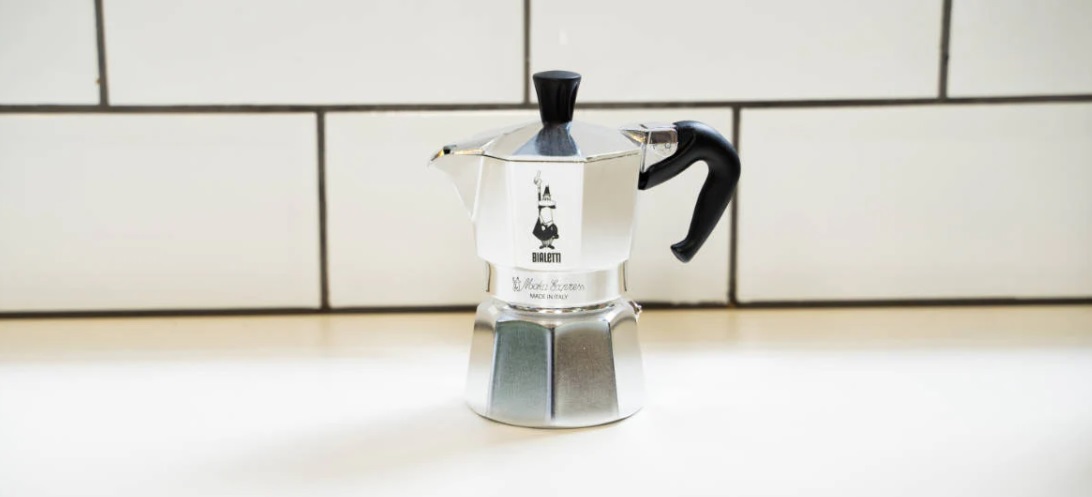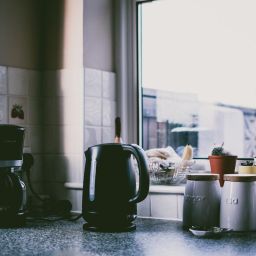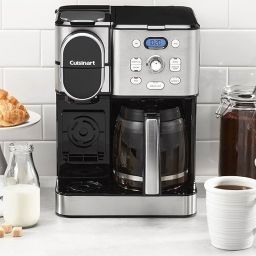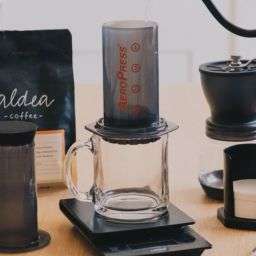
Stovetop drip coffee makers, often known simply as stovetop coffee makers, are a manual method for brewing coffee that offers control over temperature and brew time directly on your stovetop. Originating from the early 20th century, this method has evolved from simple designs to sophisticated machines that can brew a rich, aromatic cup of coffee by percolating water through coffee grounds.
Key Takeaways
- Material and Design: Essential for effective heat management, impacting the taste and temperature of the coffee.
- Brand Comparisons: Examining various brands helps identify which models offer the best quality and value.
- Maintenance Tips: Proper care can extend the lifespan of your coffee maker significantly.
- Advanced Features: Modern versions may include built-in grinders and connectivity for enhanced brewing experiences.
Types and Variations of Stovetop Drip Coffee Makers
Stovetop coffee makers range from the iconic Moka Express, known for its rich, espresso-like coffee, to modern variants equipped with features like programmable settings and smart technology. These devices are typically made from stainless steel or aluminum, each affecting the coffee’s flavor and heat conductivity.
Stainless steel models are praised for their durability and neutral flavor profile, while aluminum pots are lighter and heat up faster, but may alter the coffee’s taste slightly.
Choosing the Right Stovetop Coffee Maker
When selecting a stovetop coffee maker, consider the size, material, and compatibility with different heat sources like gas, electric, or induction cooktops. The size of the coffee maker should match your daily needs—whether you’re brewing for one or making multiple cups to share. Material-wise, stainless steel and aluminum are common, with stainless steel being more durable and less reactive, while aluminum heats up quickly.
Ease of use is also crucial. Some models are designed with simplicity in mind, requiring minimal setup and easy cleaning, which can make the daily routine smoother. Maintenance varies by design; models with fewer parts are generally easier to clean and maintain, ensuring longevity and consistent performance.
Advanced Features and Technologies
The evolution of stovetop coffee makers has embraced modern technology. High-end models now feature built-in grinders and programmable settings, allowing for a more customized brewing experience.
For instance, coffee makers like the Café Specialty Drip integrate smart technology, enabling users to control their coffee maker via smartphone. This connectivity offers convenience, allowing adjustments to brewing strength, temperature, and timing remotely.
Maintenance and Care
Keeping your stovetop coffee maker in prime condition not only extends its lifespan but also ensures that each cup of coffee tastes fresh. Regular cleaning is crucial, as coffee oils and residue can build up over time, potentially affecting the flavor of your brew.
Daily Cleaning: After each use, disassemble the coffee maker if possible and wash all parts with warm, soapy water. This prevents coffee oils from going rancid and building up residue. Make sure to rinse thoroughly to remove any soap residues.
Deep Cleaning: To tackle mineral buildup, especially in areas with hard water, use a mixture of equal parts water and white vinegar. Fill the bottom chamber with this solution and run it through a brewing cycle. Afterwards, run two cycles with plain water to rinse out any vinegar taste.
Addressing Leakages: If your coffee maker starts to leak, it could be due to a worn or damaged seal. Check the gasket and replace it if it appears cracked or brittle. Make sure the coffee maker is correctly assembled—a loose fit can also cause leaks.
FAQs
What is the best way to achieve a perfect brew with a stovetop coffee maker?
For the best brew, start with freshly ground coffee of a fine to medium grind size. Fill the lower chamber with water up to the safety valve and add coffee to the filter basket without pressing it down. Ensure all parts are properly sealed before placing it on a low to medium heat. The key is to heat slowly to extract the best flavors.
How often should I replace parts on my stovetop coffee maker?
It’s advisable to inspect your coffee maker regularly for signs of wear, especially the rubber gasket and the filter. These should typically be replaced once a year if you use your coffee maker daily. Always replace any part that appears damaged or worn out to ensure safety and optimal functioning.
What are the differences between stovetop and electric drip coffee makers?
Stovetop coffee makers brew coffee by passing boiling water pressurized by steam through coffee grounds, often resulting in a stronger brew similar to espresso. Electric drip coffee makers, on the other hand, drip hot water over coffee grounds, resulting in a milder flavor and typically brew larger quantities at a time. Stovetop models require more manual control and monitoring during the brewing process, offering a more hands-on experience.
Final Thoughts
Stovetop drip coffee makers offer a unique blend of tradition and control in the brewing process, allowing users to extract rich and robust coffee flavors. They are particularly valued for their durability and minimalist design, requiring no electricity, which makes them portable and convenient for various settings, from kitchen countertops to camping trips.
For those new to coffee brewing, a simple model without many additional features may be the best starting point, focusing on learning the brewing technique. For coffee enthusiasts, a model with options like a built-in grinder or variable temperature control could enhance the brewing experience.








